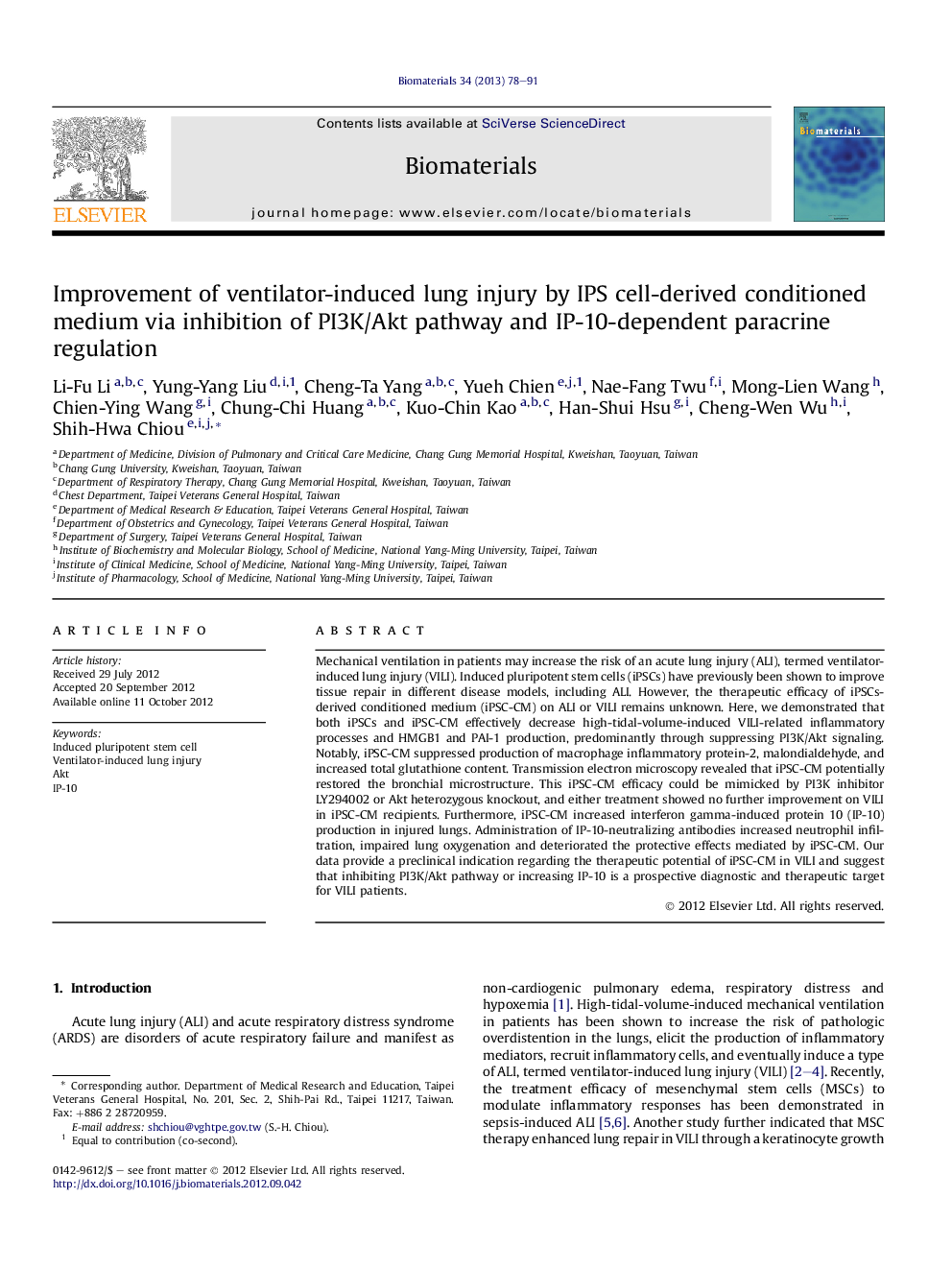| Article ID | Journal | Published Year | Pages | File Type |
|---|---|---|---|---|
| 6738 | Biomaterials | 2013 | 14 Pages |
Mechanical ventilation in patients may increase the risk of an acute lung injury (ALI), termed ventilator-induced lung injury (VILI). Induced pluripotent stem cells (iPSCs) have previously been shown to improve tissue repair in different disease models, including ALI. However, the therapeutic efficacy of iPSCs-derived conditioned medium (iPSC-CM) on ALI or VILI remains unknown. Here, we demonstrated that both iPSCs and iPSC-CM effectively decrease high-tidal-volume-induced VILI-related inflammatory processes and HMGB1 and PAI-1 production, predominantly through suppressing PI3K/Akt signaling. Notably, iPSC-CM suppressed production of macrophage inflammatory protein-2, malondialdehyde, and increased total glutathione content. Transmission electron microscopy revealed that iPSC-CM potentially restored the bronchial microstructure. This iPSC-CM efficacy could be mimicked by PI3K inhibitor LY294002 or Akt heterozygous knockout, and either treatment showed no further improvement on VILI in iPSC-CM recipients. Furthermore, iPSC-CM increased interferon gamma-induced protein 10 (IP-10) production in injured lungs. Administration of IP-10-neutralizing antibodies increased neutrophil infiltration, impaired lung oxygenation and deteriorated the protective effects mediated by iPSC-CM. Our data provide a preclinical indication regarding the therapeutic potential of iPSC-CM in VILI and suggest that inhibiting PI3K/Akt pathway or increasing IP-10 is a prospective diagnostic and therapeutic target for VILI patients.
